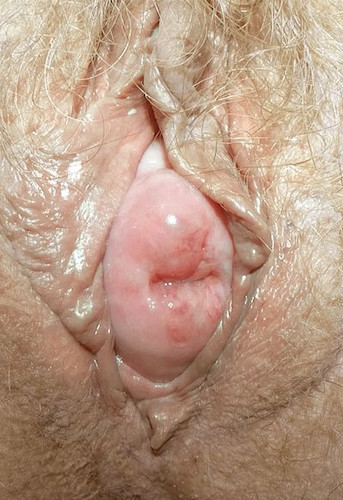🔑 Key Learning
-
Caused by weakness of the pelvic floor muscles and connective tissue.
-
Presents with a dragging sensation or a visible/palpable vaginal mass.
-
Symptoms may include urinary, bowel, and sexual dysfunction.
-
Managed conservatively with pelvic floor exercises or pessary, or surgically if severe.
🧬 Pathophysiology
-
Loss of pelvic floor integrity leads to descent of the uterus and vaginal walls.
-
Risk factors include:
-
Vaginal delivery
-
Advancing age and menopause
-
Chronic raised intra-abdominal pressure (e.g. obesity, cough, constipation, heavy lifting)
-
Connective tissue disorders
👀 Clinical Features
-
Pelvic heaviness or dragging sensation
-
Sensation of a vaginal bulge or “something coming down”
-
Visible/palpable cervix or uterus at the vaginal introitus
-
Urinary symptoms:
-
Stress incontinence
-
Urgency, frequency
-
Incomplete bladder emptying
-
Bowel symptoms:
-
Constipation, straining, incomplete evacuation
-
Sexual dysfunction:
-
Dyspareunia
-
Reduced sensation
 Figure 204: Uterine prolapse - cervix visible in the vaginal orifice
Figure 204: Uterine prolapse - cervix visible in the vaginal orifice
💊 Management
Pelvic Floor Muscle Training
-
Pelvic floor exercises (Kegel exercises)
-
Specialist physiotherapy for pelvic floor rehabilitation
Pessary Devices
-
Vaginal ring pessary used to support prolapsed organs
-
Regular monitoring and pessary changes required
Surgical Management
-
Vaginal wall repair (colporrhaphy)
-
Uterine suspension procedures:
-
Sacrospinous fixation
-
Uterosacral ligament suspension
-
Sacrohysteropexy (mesh or native tissue)
-
Hysterectomy (vaginal or abdominal) if childbearing is complete or prolapse is severe
📝 Exam Clues & Clinchers
-
Elderly postmenopausal woman with vaginal bulge, urinary frequency and incomplete voiding.
-
“Something coming down” sensation and visible cervix at the introitus.

